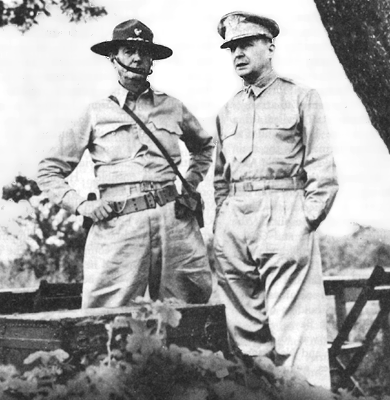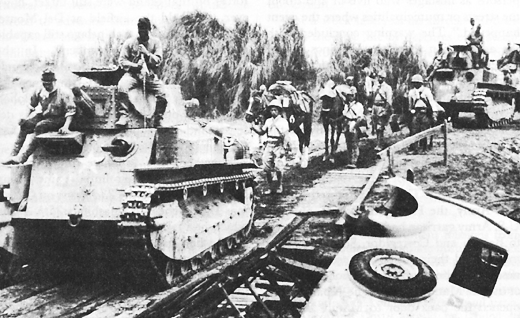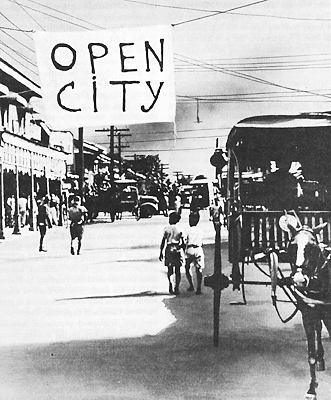Tuesday January 1, 1929
The first two brand new locomotives of the Class T1 ‘Selkirk’ type arrived in Yokohama harbor today. A total of 10 of these locomotives (numbers 5920-5929) will be built by the Montreal Locomotive Works from Canada. These locomotives will be used to pull passenger trains through Japan.
There are ambitious plans to connect all four of the main islands of the Empire (Hokkaido, Honshu, Kyushu and Shikoku) with the railway, something that will probably be done with tunnels. There is an even more ambitious plan to make a railroad connection between Kyoto and Hyderabad using a tunnel between Japan and Chosen. Most likely, such a tunnel would start at Karatsu, Japan and end at Pusan, Chosen and will run via the islands Iki and Tsushima.
http://upload.wikimedia.org/wikipedia/en/b/bf/CP_Selkirk_5915.jpg

Selkirk No 5915 of the Canadian Pacific Railway. Japan has ordered 10 of this type of locomotive.
Friday January 4, 1929
Kyoto SEAASP: 74
Monday January 7, 1929
Exchange rate for this week:
100 Yen = 1.018 USD
1 Ryo = 5.09 USD
Friday January 11, 1929
Kyoto SEAASP: 75
Monday January 14, 1929
Exchange rate for this week:
100 Yen = 1.020 USD
1 Ryo = 5.10 USD
Friday January 18, 1929
Kyoto SEAASP: 74
Monday January 21, 1929
Exchange rate for this week:
100 Yen = 1.016 USD
1 Ryo = 5.08 USD
Friday January 25, 1929
Kyoto SEAASP: 73
Monday January 28, 1929
Exchange rate for this week:
100 Yen = 1.018 USD
1 Ryo = 5.09 USD
Monday January 28, 1929
SATSUMA forces have started a large-scale amphibious operation in order to liberate the Philippines from the oppression of the Revolutionaries. We certainly hope that it will be solved soon as our star reporter is still trapped somewhere in the Philippines.
http://www.worldwar-2.net/timelines/asia-and-the-pacific/pacific-islands/pacific-islands-1941.jpg

Soldiers of the Elite
Hagetaka Shoukai (Vulture Company) are the first Japanese troops to come ashore at Lingayen Gulf.
http://www.nps.gov/amme/wwii_museum/end_of_battle/obas_company_lg.jpg

Men of Captain Oba Motomu’s Elite
Hagetaka Shoukai. Captain Oba is the man with the distinct white collar on the front row.
Friday February 1, 1929
Kyoto SEAASP: 74
Monday February 4, 1929
Exchange rate for this week:
100 Yen = 1.014 USD
1 Ryo = 5.07 USD
Friday February 8, 1929
Kyoto SEAASP: 76
Monday February 11, 1929
Exchange rate for this week:
100 Yen = 1.018 USD
1 Ryo = 5.09 USD
Friday February 15, 1929
Kyoto SEAASP: 77
Saturday February 16, 1929
http://www.wyolife.com/kerryfest/macarthur.gif

Americans in a SATSUMA mess. With his group of observers and a small guard unit, Major General Douglas MacArthur comes ashore at Lingayen Gulf.
One of his men was quoted saying "What on earth are we doing here in this SATSUMA mess?"
Monday February 18, 1929
Exchange rate for this week:
100 Yen = 1.022 USD
1 Ryo = 5.11 USD
Friday February 22, 1929
Kyoto SEAASP: 75
Monday February 25, 1929
Exchange rate for this week:
100 Yen = 1.020 USD
1 Ryo = 5.10 USD
Friday March 1, 1929
Kyoto SEAASP: 76
Friday March 1, 1929
http://www.ibiblio.org/hyperwar/USA/USA-P-PI/img/USA-P-PI-22.gif

Bicycle-mounted Japanese troops heading for the front. Photo believed to have been taken north of Angeles.
Monday March 4, 1929
Exchange rate for this week:
100 Yen = 1.018 USD
1 Ryo = 5.09 USD
Friday March 8, 1929
Kyoto SEAASP: 75
Saturday March 9, 1929
http://www.ijnafpics.com/JB&W/B5N-10.jpg

A Japanese Warplane launching its torpedo at the ferry Gallopavo.
Sunday March 10, 1929
A train carrying the Japanese delegation to the Copenhagen talks has left Vladivostock today.
Monday March 11, 1929
Exchange rate for this week:
100 Yen = 1.018 USD
1 Ryo = 5.09 USD
Friday March 15, 1929
Kyoto SEAASP: 74
Monday March 18, 1929
Exchange rate for this week:
100 Yen = 1.018 USD
1 Ryo = 5.09 USD
Wednesday March 20, 1929
http://www.ibiblio.org/hyperwar/USA/USA-P-PI/img/USA-P-PI-13.gif

American observers Major General Douglas MacArthur (right) and Lieutenant Colonel Jonathan Mayhew Wainwright IV (left).
Observing the action on various locations, Major General Douglas MacArthur was quite impressed by the performance of the American built Thompson submachinegun.
"I had heard rumors of Thompsons being used by the Japanese armed forces, despite the attempts of our government to block the sale of these weapons to Japan," MacArthur told AWNR in an exclusive interview. "This is the first time I actually see it and they were well used. Having seen it, I can't believe why the US Army is so slow to accept the weapon. I mean the Coast Guard, the Navy, and the Marines use the Thompson. Hell, even
gangsters use them to shoot each other to pieces! Last month’s mob massacre on Valentine's day is a good example."
Asked why he and his observer group were here, MacArthur replied: "This is a good opportunity to share our ideas on warfare with and give advice to our Filipino friends, and vice versa. Also we got to see the Thompson in actual combat. Unfortunately we have yet to get a glimpse of the new Japanese Arisaka Type 88 sniper rifle which '
the reporter bimbo is supposed to be using around here'..."
(Yayoko: A…CHOOO!!!)
"... or at least that was how a Japanese officer told me that... (looked to me that he was not a fan of her)"
Thursday March 21, 1929
http://www.ibiblio.org/hyperwar/USA/USA-P-PI/img/USA-P-PI-29.gif

Japanese light tanks near San Fernando, moving south toward Manila
Friday March 22, 1929
Kyoto SEAASP: 75
Monday March 25, 1929
Exchange rate for this week:
100 Yen = 1.018 USD
1 Ryo = 5.09 USD
Friday March 29, 1929
Kyoto SEAASP: 76
========================================
Major General MacArthur and Lieutenant Colonel Wainwright used with Canis's permission. Their ranks are (almost) correct for the time (Wainwright was promoted in 1929, but I had no exact date so I had him promoted prior to the invasion)
Note on Chosen-Japan tunnel: This is actually a 1939 idea, when a Japanese railroad expert conceived of a railway connection between Tokyo and Berlin. Since Wesworld Japan has India as mainland ally (as well as Chosen), I thought that the idea of a Hyderabad-Kyoto rail connection could easily appear in 1929.













Quoted
Tuesday January 1, 1929
Quoted
October 23, 1926





Quoted
Nice news post Walter, allthough I suspect mono-wing planes are a tad bit early at this time but nice touch none the less.
Quoted
Thanks for the economic boost!Quoted
As for the Selkirk she is very nice looking, my knowledge on Steam engines is limited but the diesel age is just begining in the late 20's.


 and the tail wheel. Grown quite a bit since then.
and the tail wheel. Grown quite a bit since then.
Quoted
That comes out to around $10 Billion in 1929, $100 Billion today.Quoted
That's if the technology to build such a tunnel even exists in 1929.Quoted
And I was worried that the Mexican Canal was over the top!
Quoted
Ambitious seems to understate the plan, in 1929.Quoted
A more likely result would be the railway setting up a steamship line to transprt passengers to and from Japan/Chosen.